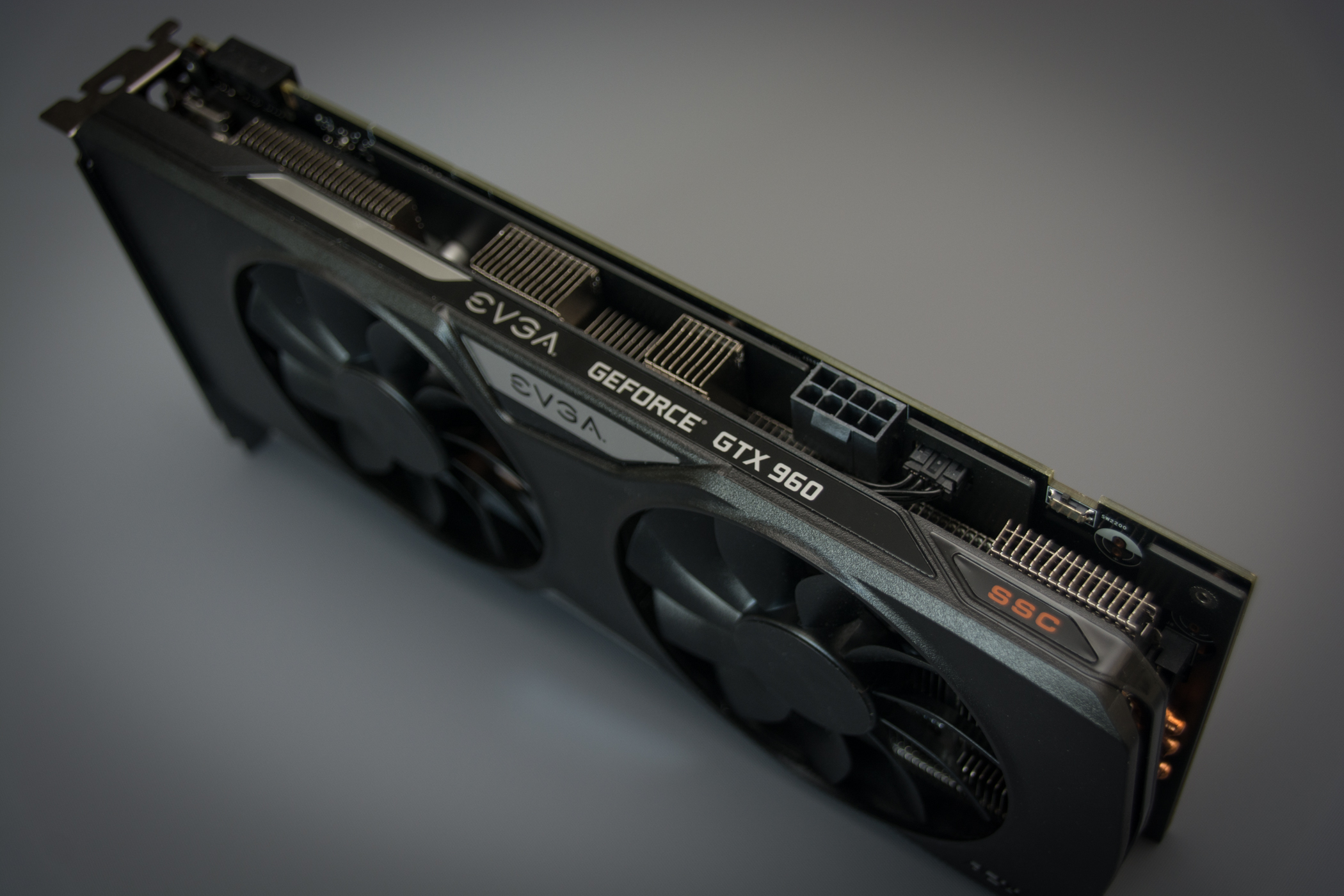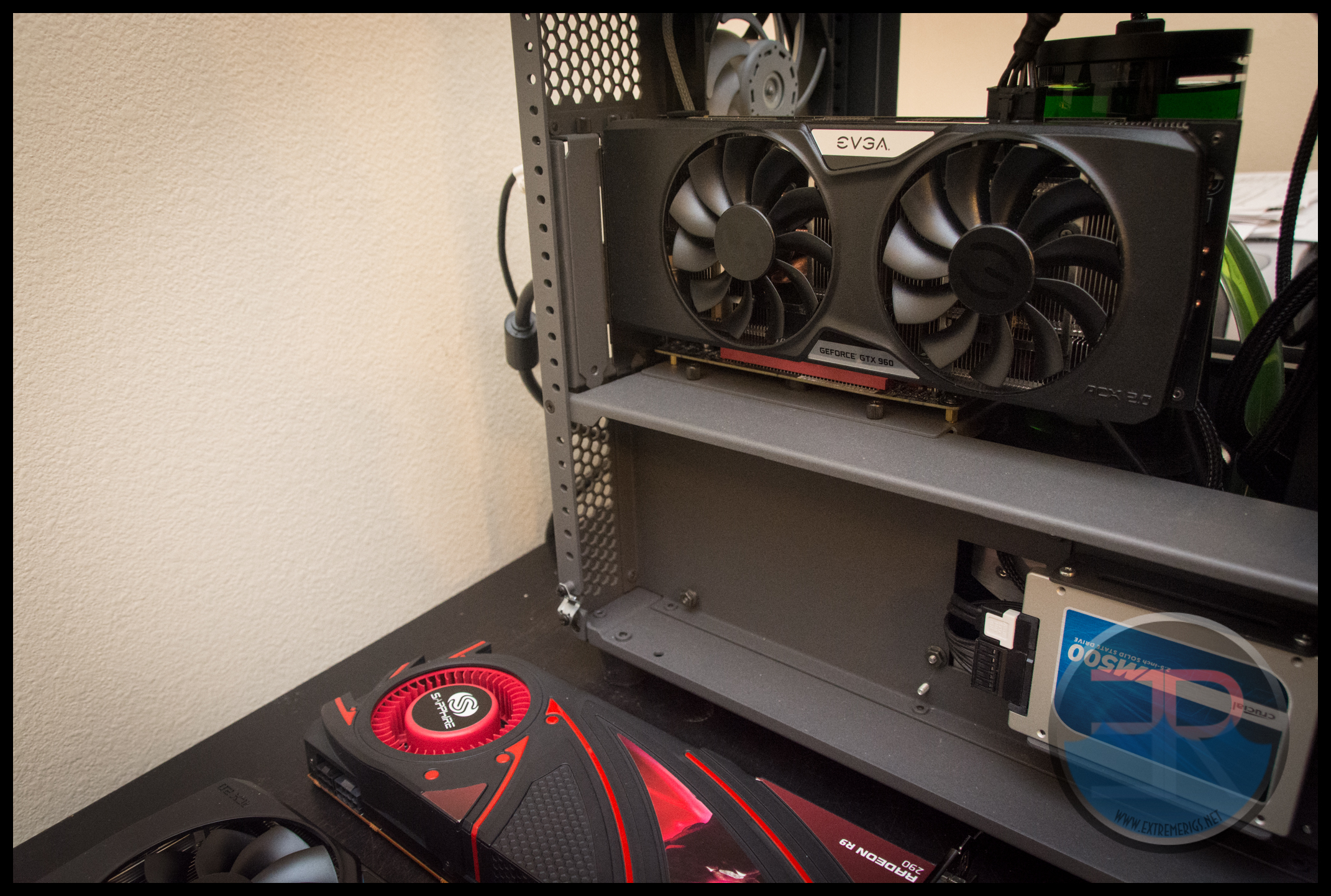Test Setup Configuration
For our setup we used Asus’s Maximus VI Impact board along with Intel’s flagship CPU, the 4790k is watercooled inside a CaseLabs S3 with an decent overclock of 4.8GHz. Memory is 2x4GB of Corsair Dominator GT running at 2133 CL9. Power is provided by an AX 850. Storage is provided by a 960GB Crucial M500 SSD.
We will be running tests both at 1920 x 1080 (1080p) & 3840 x 2160 (UHD or 4k) using a Dell P2715Q monitor. Despite the high cpu overclock there may be occasions at 1080p where the CPU may limit performance and so we show total CPU load also. Bear in mind that poorly threaded games that do not utilize multiple cores well may not read 100% across all cores despite effectively throttling.
We use HWiNFO to record all of our data. Windows 8.1 was used as well as the 355.82 WHQL drivers.
While the reference GTX 960 has a boost clock of 1178MHz EVGA have increased the stock clocks of the SuperSC up to 1342MHz. In our testing however the card boosted higher still. The 960 typically ran 1380-1390MHz on average. We also ran the 1080p tests with an overclock on the GPUto 1498MHz and 8200MT/s on the memory – this was achieved using EVGA Precision X and a voltage bump. We had issues with MSI’s afterburner for overclocking on this card so we would definitely recommend Precision X instead. Despite the extra power of the overclock, the higher power limit on this version of the card (160W) meant that we were never even close to power throttling. The ACX 2.0+ with it’s default fan profile was also able to keep the card virtually silent (<1200RPM) even when loaded for hours when overclocked and overvolted.
While the games were also benchmarked at 4K we do of course know that the card will struggle there. We included this to prove out the data so that we can back up our opinions but we didn’t run the card in an overclocked state at 4K simply because it won’t make an unplayable game suddenly playable.
Now let’s see some results!














[…] EVGA GTX 960 SSC Review […]
Comments are closed.